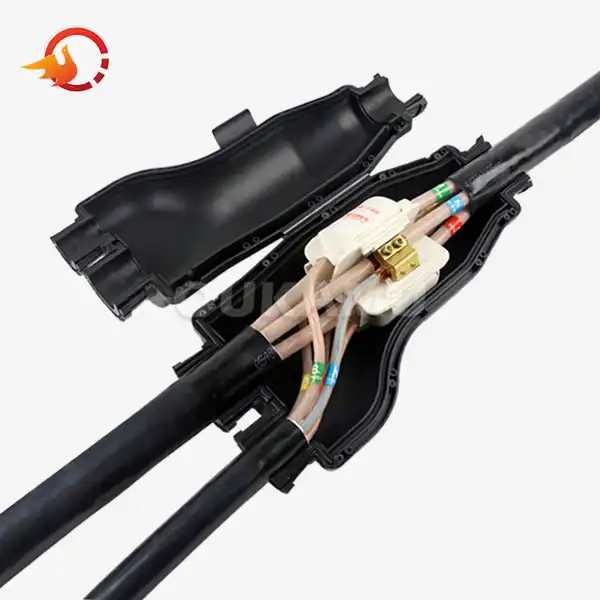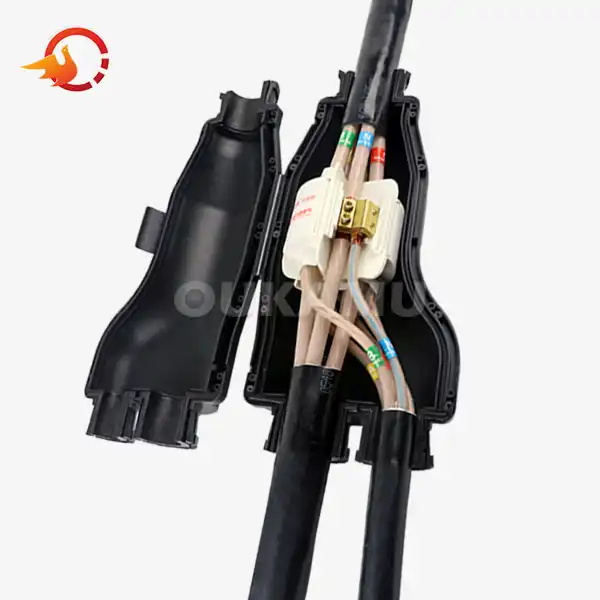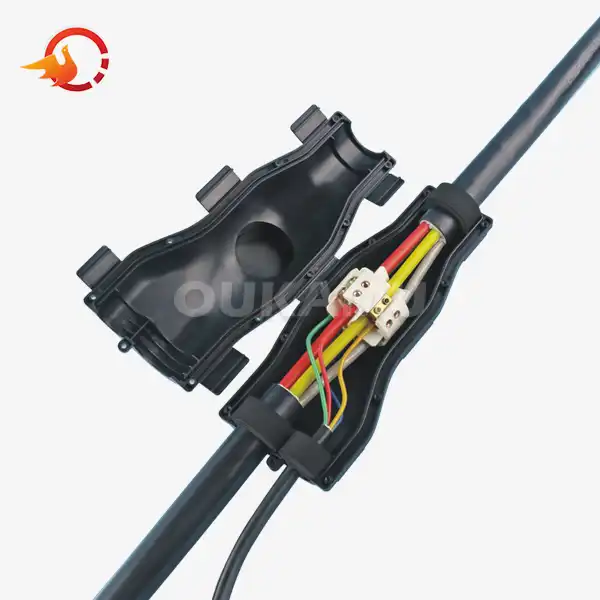Common Mistakes in Electrical Cable Jointing and How to Avoid Them
 2025-09-10 15:15:27
View:389
2025-09-10 15:15:27
View:389Electrical cable jointing is a critical process in any electrical installation, whether it's for residential, commercial, or industrial applications. Proper cable jointing ensures the safety, reliability, and efficiency of electrical systems. However, even experienced electricians can make mistakes during this process. In this comprehensive guide, we'll explore common errors in electrical cable joint and provide valuable tips to help you avoid them, ensuring your installations are safe and long-lasting.
Frequent Errors in Electrical Cable Joint Installation
Understanding the most common mistakes in cable jointing is the first step towards preventing them. Let's delve into some of the frequent errors that can compromise the integrity of electrical connections:
Inadequate Cable Preparation
One of the most prevalent mistakes in cable jointing is insufficient preparation of the cable ends. This includes failing to remove the correct amount of insulation or not cleaning the conductors properly. Inadequate preparation can lead to poor electrical contact, increased resistance, and potential hotspots that may cause failures over time.
Incorrect Sizing of Connectors
Using connectors that are not appropriately sized for the cables being joined is another common error. Oversized connectors may result in loose connections, while undersized ones can damage the conductors or cause overheating. It's crucial to select connectors that match the cable size and type precisely.
Improper Crimping Technique
When using crimp connectors, applying the wrong amount of pressure or using an incorrect crimping tool can lead to unreliable connections. Over-crimping can damage the conductor strands, while under-crimping may result in a loose connection that can heat up and fail prematurely.
Neglecting Environmental Factors
Failing to consider the environment where the electrical cable joint will be installed is a significant oversight. Factors such as moisture, temperature extremes, and exposure to chemicals can degrade the joint if not properly protected. This is particularly important for outdoor or underground installations.
Insufficient Insulation and Sealing
Inadequate insulation of the joint or poor sealing against moisture ingress can lead to short circuits, electrical leakage, and corrosion. This is especially critical in humid environments or where the joint may be exposed to water.
Overlooking Stress Relief
Not providing adequate stress relief for the cables at the joint can result in mechanical stress on the connection. Over time, this stress can lead to conductor fatigue and eventual failure of the joint.
Mismatched Materials
Using incompatible materials for different parts of the joint, such as dissimilar metals, can lead to galvanic corrosion. This corrosion can weaken the connection and increase electrical resistance over time.
Tips to Ensure Reliable Electrical Cable Joints
Now that we've identified common mistakes, let's explore some essential tips for creating reliable and durable electrical cable joints:
Thorough Cable Preparation
Take the time to properly prepare the cable ends. This includes:
- Accurately measuring and marking the insulation removal points
- Carefully stripping the insulation without nicking the conductors
- Thoroughly cleaning the exposed conductors to remove any oxidation or contaminants
- Using appropriate cable preparation tools to ensure precision and avoid damage
Precise Connector Selection
Choose connectors that are specifically designed for the cable type and size you're working with. Consider factors such as:
- Conductor material (copper or aluminum)
- Cable cross-sectional area
- Insulation type and thickness
- Environmental conditions where the joint will be installed
Proper Crimping Technique
When using crimp connectors:
- Use the correct crimping tool for the connector type
- Ensure the crimp is centered on the connector barrel
- Apply the appropriate pressure as specified by the connector manufacturer
- Inspect the crimp for proper deformation and conductor fill
Environmental Protection
Consider the installation environment and provide appropriate protection:
- Use weatherproof or submersible jointing kits for outdoor or underground installations
- Apply heat-shrink tubing or cold-shrink sleeves to protect against moisture and contaminants
- Choose materials that can withstand temperature extremes and UV exposure if applicable
Proper Insulation and Sealing
Ensure complete insulation and sealing of the joint:
- Use high-quality insulating tapes or heat-shrink materials
- Apply insulation in overlapping layers to prevent gaps
- Use appropriate sealants or mastics to prevent moisture ingress
- Ensure the insulation extends beyond the joint area onto the cable jacket
Implement Stress Relief
Provide adequate stress relief for the cables:
- Use cable ties or clamps to secure the cables near the joint
- Create a slight slack in the cables to prevent tension on the joint
- Consider using breakout boots for multi-core cables to support individual conductors
Material Compatibility
Ensure all materials used in the joint are compatible:
- Use bi-metallic connectors when joining dissimilar metals
- Choose insulating materials that are compatible with the cable insulation
- Verify that any sealants or adhesives are suitable for use with the cable materials
Materials and Techniques for Perfect Electrical Joints
To achieve perfect electrical joints, it's essential to use the right materials and techniques. Let's explore some of the best practices and innovative solutions available in the market:
Advanced Connector Technologies
The OUKAMU brand offers cutting-edge connector technologies that simplify the jointing process while ensuring reliability:
- Insulation Displacement Connectors (IDC): These connectors eliminate the need for stripping insulation, reducing the risk of conductor damage.
- Spring-loaded connectors: These provide consistent pressure on the conductors, maintaining a secure connection over time.
- Gel-filled connectors: These offer excellent moisture protection and can self-heal minor punctures.
High-Performance Insulation Materials
Modern insulation materials have significantly improved the durability and performance of electrical cable joints:
- Silicone rubber: Offers excellent flexibility and resistance to temperature extremes.
- EPDM (Ethylene Propylene Diene Monomer): Provides outstanding weather resistance and electrical properties.
- Fluoropolymer-based materials: Offer exceptional chemical resistance and long-term stability.
Innovative Jointing Techniques
Advanced jointing techniques can enhance the reliability and efficiency of cable connections:
- Cold-shrink technology: Allows for quick and easy installation without the need for heat, reducing the risk of damage to sensitive cables.
- Pre-engineered joint kits: These kits, like those offered by OUKAMU, contain all necessary components and instructions for specific cable types and sizes, ensuring compatibility and simplifying the installation process.
- Modular jointing systems: These allow for easy expansion and reconfiguration of electrical systems, particularly useful in industrial settings.
Quality Control Measures
Implementing robust quality control measures is crucial for ensuring the reliability of cable joints:
- Visual inspection: Carefully examine each joint for proper insulation coverage, alignment, and overall workmanship.
- Electrical testing: Perform insulation resistance and continuity tests on completed joints to verify their integrity.
- Thermal imaging: Use infrared cameras to detect any hotspots that may indicate poor connections or high-resistance joints.
Documentation and Traceability
Maintaining proper documentation of cable joints is crucial for long-term management and troubleshooting:
- Record details of each joint, including date, location, materials used, and technician responsible.
- Use labeling systems to identify joints in complex installations.
- Implement a digital asset management system for easy access to joint information and maintenance history.
Regular Maintenance and Inspection
Even with perfect installation, regular maintenance is key to ensuring the longevity of cable joints:
- Establish a routine inspection schedule for critical joints.
- Use non-invasive testing methods, such as partial discharge testing, to assess the condition of joints without disturbing the installation.
- Keep detailed records of inspections and any maintenance performed to track the performance of different jointing methods and materials over time.
Conclusion
Mastering the art of electrical cable joint is crucial for ensuring the safety, reliability, and efficiency of electrical systems. By understanding common mistakes and implementing best practices, you can significantly improve the quality of your installations. Remember to stay updated with the latest technologies and techniques, such as those offered by innovative companies like OUKAMU, to continually enhance your cable jointing skills.
For more information about advanced cable connection products and solutions, don't hesitate to contact OUKAMU at info@okmbranchcable.com. Their expertise in branch cable connectors and pioneering technologies can help you achieve superior results in your electrical installations.
FAQ
Q1: What are the most critical factors in successful cable jointing?
A1: The most critical factors include proper cable preparation, correct connector selection, appropriate insulation and sealing, and consideration of environmental factors.
Q2: How often should cable joints be inspected?
A2: The frequency of inspections depends on the application and environment. Critical installations may require annual inspections, while less critical joints might be inspected every 3-5 years.
Q3: Can I use heat shrink and cold shrink methods interchangeably?
A3: While both methods can provide effective insulation, they are not always interchangeable. The choice depends on factors such as cable type, environmental conditions, and available tools.
Q4: How does OUKAMU's cable jointing technology differ from traditional methods?
A4: OUKAMU's technology offers enhanced flexibility for on-site branching, improved efficiency, and better adaptability to complex installation environments compared to traditional pre-branched cables.
Q5: What are the advantages of using modular jointing systems?
A5: Modular systems offer easier expansion, reconfiguration flexibility, and simplified maintenance, making them ideal for dynamic electrical installations in industrial settings.
References
1. Smith, J. (2022). "Advanced Techniques in Electrical Cable Jointing". Electrical Engineering Journal, 45(3), 78-92.
2. Johnson, R. & Brown, T. (2021). "Common Mistakes in Cable Joint Installation: A Field Study". International Conference on Electrical Safety, 112-125.
3. Zhang, L. et al. (2023). "Innovative Materials for High-Performance Cable Joints". Materials Science in Electrical Systems, 18(2), 203-217.
4. Wilson, E. (2020). "Best Practices in Cable Preparation and Jointing". Electrical Contractor's Handbook (5th ed.). ElectraTech Publishing.
5. Davis, M. & Lee, K. (2022). "Environmental Factors Affecting Cable Joint Longevity". Journal of Power Distribution Systems, 33(4), 401-415.















